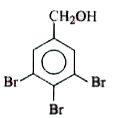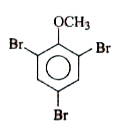dissolves in:
water
ether
ammonia
A and B both
The correct Answer is:D
To determine the solubility of FeCl₃ (ferric chloride) in various solvents, we need to analyze its behavior in each of the provided options: water, ether, ammonia, and both A and B.
1. Understanding FeCl₃:
- Ferric chloride (FeCl₃) is an electron-deficient compound. Iron in FeCl₃ has six valence electrons and can accept a lone pair of electrons, making it a Lewis acid.
Hint: Recall that Lewis acids are electron pair acceptors.
2. Solubility in Water:
- When FeCl₃ is added to water, it forms a complex with water molecules. Specifically, it can form a hydrated complex, often represented as FeCl₃·6H₂O. This complexation allows FeCl₃ to dissolve in water.
Hint: Think about how hydration affects ionic compounds and their solubility.
3. Solubility in Ether:
- Ether contains oxygen, which has lone pairs of electrons. When FeCl₃ is mixed with ether, the oxygen donates a lone pair to the electron-deficient iron, allowing FeCl₃ to dissolve in ether as well.
Hint: Consider the role of lone pairs in solubility and complex formation.
4. Interaction with Ammonia:
- When FeCl₃ is mixed with ammonia (NH₃), it does not simply dissolve. Instead, it reacts to form a complex, specifically Fe(NH₃)₂Cl₂, along with ammonium chloride (NH₄Cl). This indicates that FeCl₃ does not dissolve in ammonia but instead undergoes a chemical reaction.
Hint: Differentiate between dissolution and chemical reaction when mixing compounds.
5. Conclusion:
- Based on the analysis, FeCl₃ is soluble in both water and ether, but it does not dissolve in ammonia. Therefore, the correct answer to the question is that FeCl₃ dissolves in water and ether.
Final Answer:
FeCl₃ dissolves in water and ether (both A and B).
---
- Ferric chloride (FeCl₃) is an electron-deficient compound. Iron in FeCl₃ has six valence electrons and can accept a lone pair of electrons, making it a Lewis acid.
- When FeCl₃ is added to water, it forms a complex with water molecules. Specifically, it can form a hydrated complex, often represented as FeCl₃·6H₂O. This complexation allows FeCl₃ to dissolve in water.
- Ether contains oxygen, which has lone pairs of electrons. When FeCl₃ is mixed with ether, the oxygen donates a lone pair to the electron-deficient iron, allowing FeCl₃ to dissolve in ether as well.
- When FeCl₃ is mixed with ammonia (NH₃), it does not simply dissolve. Instead, it reacts to form a complex, specifically Fe(NH₃)₂Cl₂, along with ammonium chloride (NH₄Cl). This indicates that FeCl₃ does not dissolve in ammonia but instead undergoes a chemical reaction.
- Based on the analysis, FeCl₃ is soluble in both water and ether, but it does not dissolve in ammonia. Therefore, the correct answer to the question is that FeCl₃ dissolves in water and ether.
FeCl₃ dissolves in water and ether (both A and B).
Topper's Solved these Questions
- BOOK - RESONANCE ENGLISHCHAPTER - D BLOCK ELEMENTSEXERCISE - EXERCISE-I PART-III15videos
D BLOCK ELEMENTS
- BOOK - RESONANCE ENGLISHCHAPTER - D BLOCK ELEMENTSEXERCISE - EXERCISE-2 PART-I27videos
D BLOCK ELEMENTS
- BOOK - RESONANCE ENGLISHCHAPTER - D BLOCK ELEMENTSEXERCISE - EXERCISE-I PART-I40videos
D BLOCK ELEMENTS
- BOOK - RESONANCE ENGLISHCHAPTER - D & F BLOCK ELEMENTSEXERCISE - ORGANIC CHEMISTRY(Aldehydes , Ketones, Carboxylic acid)15videos
D & F BLOCK ELEMENTS
- BOOK - RESONANCE ENGLISHCHAPTER - DPPEXERCISE - QUESTIONS368videos
DPP
Similar Questions
Compound (A)C7H8O is insoluble in aqueous NaHCO3 and dissolves in aqueous NaOH and gives a characteristic colour with neutral FeCl3 . When treated with Br2(A) forms compound (B)C7H5OBr3.
The most probable structure of compound A is :View SolutionIron forms iron halides salts by reacting the metal directly with halogen. FeI3 does not exist. FeF3 is white soled inspite of five unpaired electrons with d5 configuration . FeCl3 is soluble in water and is used as a mordant in dyeing industry.
Q.Anhydrous FeCl3 can be prepared by reaction of:View Solution
Knowledge Check
- Question 1 - Select One
Compound (A) C7H8O is insoluble in aqueous NaHCO3 and dissolves in aqueous NaOH and gives a characteristic colour with neutral FeCl3 . When treated with Br2 (A) forms compound (B) C7H5OBr3 .
The structure of compound (B) would be :A B
B C
C D
D
- Question 2 - Select One
Compound (A) C7H8O is insoluble in aqueous NaHCO3 and dissolves in aqueous NaOH and gives a characteristic colour with neutral FeCl3 . When treated with Br2 (A) forms compound (B) C7H5OBr3 .
The most probable structure of compound A is :A B
B C
C D
D
- Question 3 - Select One
The reaction of toluene with Cl2 in presence of FeCl3 gives :
Abenzoyl chlorideBbenzyl chlorideCo - and p - chlorotolueneDm-chlorotoluene
FeCl3 s stored in air tight bottles because it is a _____ substance.
View SolutionAn organic compound (A) with molecular formula C7H8O dissolves in NaOH and gives characteristic colour with FeCl3. On treatement with Br3, it gives a tribromo product C7H5Br3. The compound is:
View SolutionAn organic compound (A) with molecular formula C7H8O dissolves in NaOH and gives characteristic colour with FeCl3. On treatment with Br2, it gives a tribromo product C7H5OBr3. The compound is:
View SolutionFeCl3 solution is acidic due to hydrolysis of :-
View SolutionPhenol gives . . . . . . . . Colour with neutral FeCl3 solution :
View Solution
